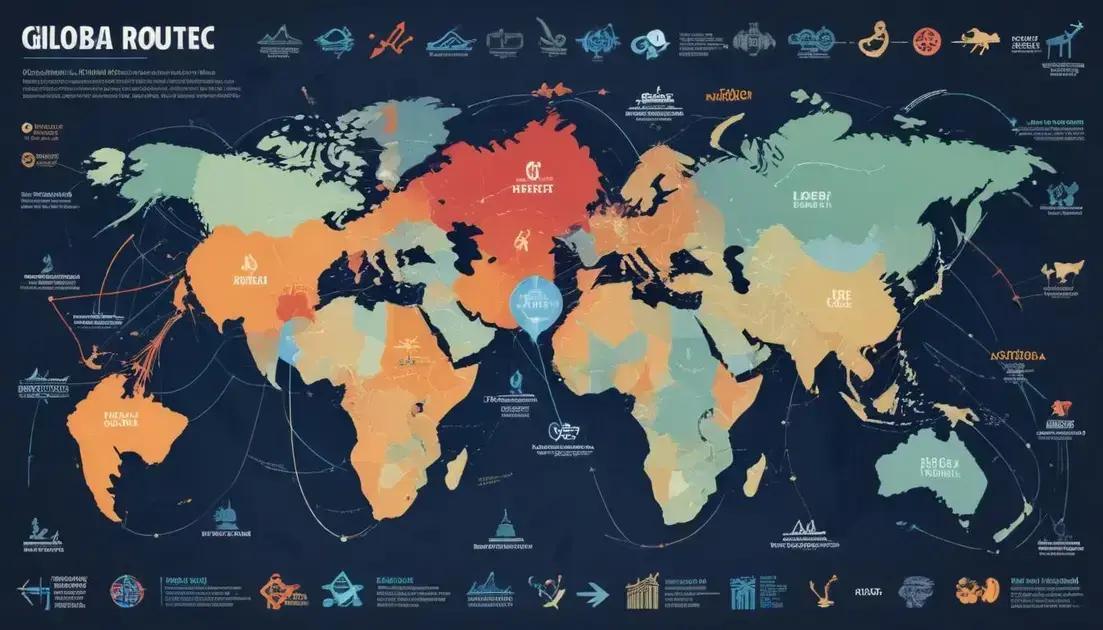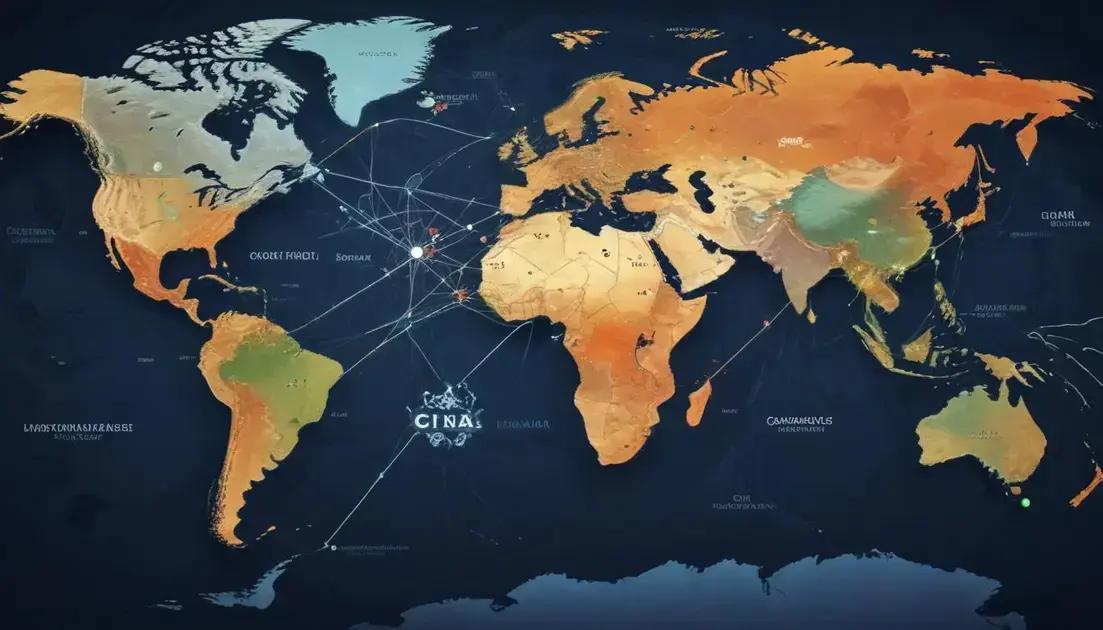Chinese orders US shopping: inside the global consumer revolution

The landscape of global commerce is being dramatically reshaped by Chinese orders US shopping trends, creating unprecedented shifts in international retail dynamics. As digital platforms break down traditional barriers, consumers are redefining how products move across borders, challenging existing economic paradigms.
Emerging trends in cross-border e-commerce
Cross-border e-commerce is experiencing a revolutionary transformation, driven by technological advancements and changing consumer behaviors. Global digital platforms are breaking traditional geographical barriers, enabling seamless international shopping experiences that were unimaginable just a decade ago.
Digital Infrastructure Enabling Global Trade
Modern e-commerce platforms now integrate advanced translation services, multi-currency payment systems, and sophisticated logistics networks. These technological innovations allow consumers to browse, compare, and purchase products from international markets with unprecedented ease and convenience.
Consumer Behavior Shifts
Today’s online shoppers are increasingly comfortable purchasing from foreign retailers. Factors like competitive pricing, unique product offerings, and the ability to access global brands are driving this trend. Social media and influencer marketing play crucial roles in exposing consumers to international shopping opportunities.
Emerging Market Dynamics
Developing economies are rapidly becoming significant players in cross-border e-commerce. Countries like China, India, and Brazil are not just consumers but also emerging exporters, creating complex and dynamic international trade ecosystems.
Advanced data analytics and artificial intelligence are helping businesses personalize cross-border shopping experiences, predicting consumer preferences and streamlining international logistics.
How Chinese consumer behavior reshapes US retail
Chinese consumer behavior is fundamentally transforming the landscape of US retail, introducing complex and dynamic shifts in purchasing patterns and market strategies. Digital innovation and changing consumer preferences are driving unprecedented market adaptations.
Digital Payment Revolution
Mobile payment technologies like WeChat Pay and Alipay are influencing US retail practices. American retailers are increasingly adopting these seamless, integrated payment solutions to attract Chinese consumers, who expect frictionless digital transactions.
Luxury and Brand Perception
Chinese consumers demonstrate a unique approach to luxury consumption, prioritizing brand storytelling, authenticity, and social media validation. US luxury brands are redesigning marketing strategies to appeal to this discerning and digitally connected demographic, focusing on experiential marketing and personalized engagement.
E-commerce and Cross-Border Shopping
Advanced logistics and digital platforms have enabled Chinese consumers to purchase US products directly, creating new market opportunities. Platforms like Tmall Global and JD Worldwide are facilitating these international shopping experiences, challenging traditional retail boundaries.
Data-driven personalization and sophisticated consumer analytics are helping US retailers understand and anticipate Chinese consumer preferences, leading to more targeted and effective marketing approaches.
Digital platforms driving international shopping
Digital platforms are revolutionizing international shopping, creating seamless, borderless consumer experiences that transcend traditional geographical limitations. Advanced technological ecosystems are transforming how consumers discover, evaluate, and purchase products from around the globe.
Global Marketplace Integration
Modern digital platforms like Amazon, Alibaba, and eBay have developed sophisticated cross-border infrastructure. These platforms provide comprehensive translation services, multi-currency payment options, and integrated shipping solutions that simplify international transactions.
Social Commerce Evolution
Social media platforms are increasingly becoming powerful shopping channels. Instagram, WeChat, and TikTok now offer direct purchasing capabilities, allowing consumers to buy products instantly through interactive, visually-driven interfaces. Influencer marketing and user-generated content play crucial roles in driving these international shopping trends.
AI and Personalization Technologies
Machine learning algorithms analyze consumer behavior across different markets, providing personalized product recommendations and creating tailored shopping experiences. These technologies help bridge cultural and linguistic barriers, making international shopping more intuitive and accessible.
Blockchain and secure payment gateways are further enhancing trust in cross-border e-commerce, reducing transaction risks and providing transparent, traceable purchasing processes for international consumers.
Economic implications of Chinese purchasing power

Chinese purchasing power is reshaping global economic landscapes, creating complex and far-reaching implications for international markets. The economic influence extends beyond traditional trade boundaries, driving significant transformations in multiple sectors.
Global Market Expansion
Chinese consumers are increasingly driving demand in luxury goods, technology, and international brands. Their sophisticated purchasing behaviors are compelling companies worldwide to redesign products, marketing strategies, and distribution channels to capture this lucrative market segment.
Investment and Capital Flow
The massive purchasing power of Chinese consumers is generating substantial capital movement across international markets. This economic phenomenon is influencing real estate, stock markets, and foreign direct investments, creating new opportunities and challenges for global economies.
Supply Chain Transformation
Chinese purchasing trends are forcing global supply chains to become more agile and responsive. Manufacturers and retailers are adapting production processes, inventory management, and logistics to meet the sophisticated demands of Chinese consumers.
Technological innovation, digital payment systems, and cross-border e-commerce are further amplifying the economic impact of Chinese purchasing power, creating unprecedented interconnectedness in global trade ecosystems.
Top US products attracting Chinese consumers
Chinese consumers are increasingly drawn to specific US products that represent quality, innovation, and cultural prestige. These products span multiple categories, reflecting sophisticated consumer preferences and global market dynamics.
Technology and Electronics
Apple products, high-end computers, and advanced semiconductor technologies are particularly appealing. Chinese consumers view these items as status symbols and quality benchmarks, demonstrating a strong preference for cutting-edge technological innovations from US manufacturers.
Health and Wellness Products
Nutritional supplements, organic food products, and premium health and beauty brands are experiencing significant demand. US-manufactured vitamins, skincare products, and specialty dietary items are perceived as superior in quality and scientific development.
Luxury Fashion and Accessories
Designer brands like Ralph Lauren, Michael Kors, and premium athletic wear from Nike and Under Armour attract Chinese consumers. These products represent not just fashion, but lifestyle and international brand recognition.
Baby products, premium infant formula, and specialized children’s goods from US manufacturers continue to be highly sought after, driven by quality perception and safety standards associated with American manufacturing.
Future of global retail and consumer dynamics
Global retail and consumer dynamics are undergoing radical transformations, driven by technological innovations and shifting market paradigms. Emerging trends are reshaping how consumers interact with products and brands across international boundaries.
Technological Integration
Artificial intelligence, augmented reality, and advanced data analytics are creating hyper-personalized shopping experiences. Consumers can now virtually try products, receive customized recommendations, and engage with brands through immersive digital platforms that transcend traditional retail limitations.
Sustainability and Ethical Consumption
Modern consumers are increasingly prioritizing sustainable and socially responsible purchasing decisions. Brands that demonstrate environmental consciousness, transparent supply chains, and ethical production practices are gaining significant market advantage across global demographics.
Decentralized and Borderless Commerce
Blockchain technologies and advanced digital payment systems are eliminating traditional barriers to international trade. Consumers can now purchase products from anywhere in the world with unprecedented ease, creating a truly global marketplace that operates beyond geographical constraints.
Predictive algorithms and machine learning are enabling businesses to anticipate consumer needs, develop more responsive product strategies, and create increasingly personalized shopping experiences that adapt in real-time to changing market dynamics.
Technology’s role in international shopping experiences
Technology is fundamentally revolutionizing international shopping experiences, creating seamless, personalized, and borderless consumer interactions. Digital innovations are breaking traditional retail barriers, transforming how consumers discover, evaluate, and purchase products globally.
Artificial Intelligence and Personalization
Advanced AI algorithms analyze consumer behavior, providing hyper-personalized product recommendations. Machine learning enables real-time translation, adaptive pricing, and culturally nuanced shopping experiences that transcend linguistic and geographical limitations.
Augmented and Virtual Reality
Immersive technologies like augmented reality (AR) and virtual reality (VR) allow consumers to virtually try products, explore digital showrooms, and experience items before purchasing. These technologies reduce uncertainty in cross-border shopping and enhance consumer confidence.
Blockchain and Secure Transactions
Blockchain technology ensures transparent, secure international transactions by providing decentralized verification systems. Smart contracts and cryptocurrency options are simplifying cross-border payments, reducing transaction costs and eliminating traditional banking barriers.
Mobile platforms and integrated payment systems are further streamlining international shopping, enabling instant purchases, real-time currency conversion, and seamless global delivery tracking.
Challenges and opportunities in transnational retail

Transnational retail presents a complex landscape of intricate challenges and unprecedented opportunities for global businesses. Cross-border commerce is rapidly evolving, demanding innovative strategies and adaptive approaches to navigate international market dynamics.
Regulatory and Compliance Challenges
Different countries maintain unique legal frameworks, taxation systems, and import regulations. Businesses must invest in comprehensive compliance strategies, understanding nuanced trade policies, customs requirements, and international business protocols to successfully operate across multiple markets.
Logistical Infrastructure
Developing efficient cross-border supply chains remains a critical challenge. Companies must design sophisticated logistics networks that can handle complex international shipping, manage diverse transportation methods, and provide transparent tracking systems for global consumers.
Cultural and Consumer Adaptation
Successful transnational retail requires deep understanding of local consumer preferences, cultural nuances, and purchasing behaviors. Businesses must develop flexible marketing strategies that can be quickly localized and adapted to different regional expectations.
Advanced technological solutions like AI-powered translation services, machine learning analytics, and blockchain-based verification systems are emerging as critical tools for overcoming traditional transnational retail barriers.
The Future of Global Shopping: Bridging Borders Through Technology
The evolving landscape of international shopping represents a remarkable convergence of technology, consumer behavior, and global economic dynamics. Chinese orders US shopping trends are not just a passing phenomenon, but a fundamental shift in how we understand global commerce.
As digital platforms continue to break down traditional barriers, consumers worldwide are experiencing unprecedented access to products, information, and shopping experiences. The integration of artificial intelligence, personalized marketing, and cross-border e-commerce is creating a more interconnected and responsive global marketplace.
For businesses and consumers alike, the key to success lies in embracing technological innovation, understanding cultural nuances, and remaining adaptable in an increasingly dynamic international retail environment. The future of shopping is not about geographical limitations, but about creating seamless, personalized experiences that transcend borders.
As we move forward, those who can navigate these complex global shopping ecosystems with agility, technological sophistication, and cultural intelligence will be best positioned to thrive in this new era of international retail.





